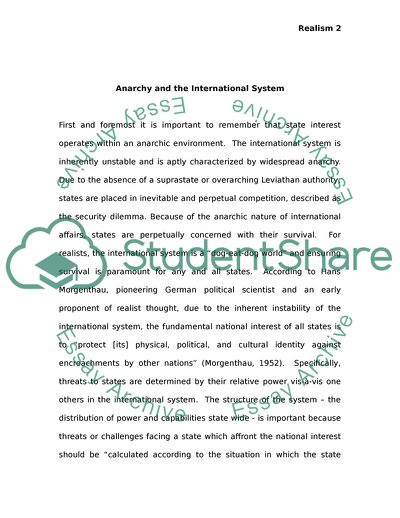Cite this document
(Realism and the International Order Coursework Example | Topics and Well Written Essays - 2000 words, n.d.)
Realism and the International Order Coursework Example | Topics and Well Written Essays - 2000 words. https://studentshare.org/politics/1717672-how-do-positivist-international-relations-theories-explain-the-reasons-for-international-order-despite-the-condition-of-international-anarchy
Realism and the International Order Coursework Example | Topics and Well Written Essays - 2000 words. https://studentshare.org/politics/1717672-how-do-positivist-international-relations-theories-explain-the-reasons-for-international-order-despite-the-condition-of-international-anarchy
(Realism and the International Order Coursework Example | Topics and Well Written Essays - 2000 Words)
Realism and the International Order Coursework Example | Topics and Well Written Essays - 2000 Words. https://studentshare.org/politics/1717672-how-do-positivist-international-relations-theories-explain-the-reasons-for-international-order-despite-the-condition-of-international-anarchy.
Realism and the International Order Coursework Example | Topics and Well Written Essays - 2000 Words. https://studentshare.org/politics/1717672-how-do-positivist-international-relations-theories-explain-the-reasons-for-international-order-despite-the-condition-of-international-anarchy.
“Realism and the International Order Coursework Example | Topics and Well Written Essays - 2000 Words”. https://studentshare.org/politics/1717672-how-do-positivist-international-relations-theories-explain-the-reasons-for-international-order-despite-the-condition-of-international-anarchy.


